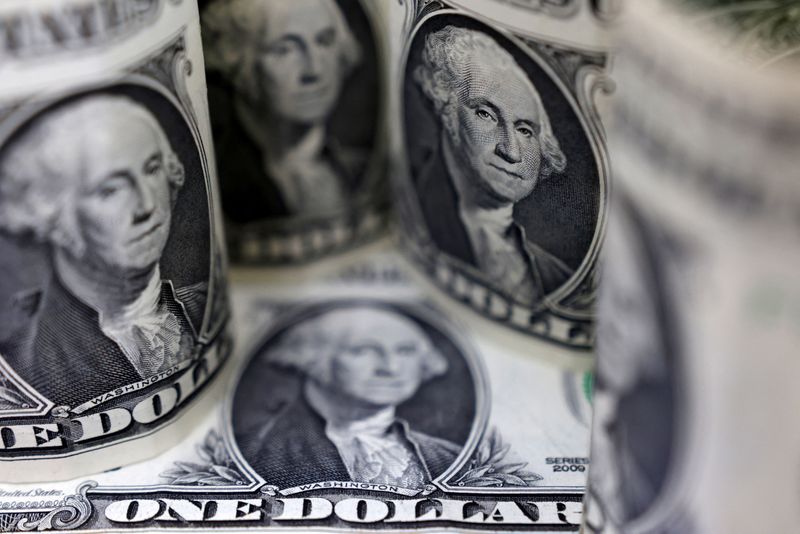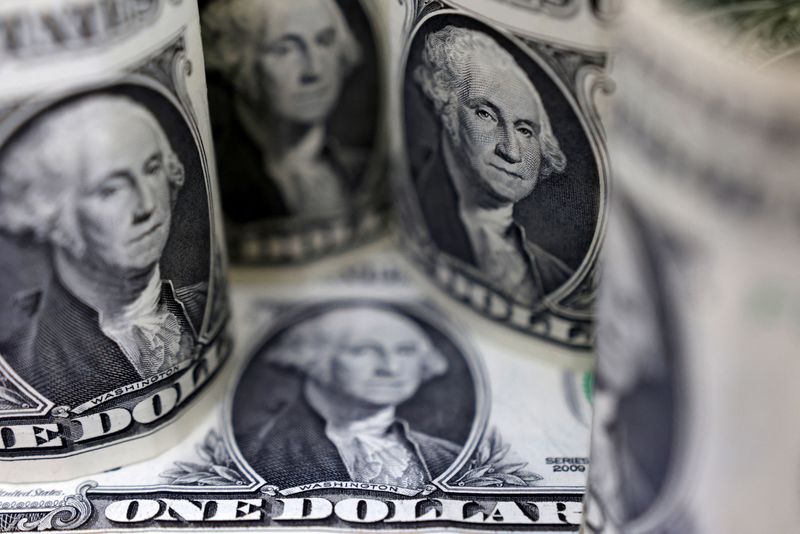
By Rae Wee and Dhara Ranasinghe
SINGAPORE (Reuters) -The yen rose sharply on Wednesday in what traders suspected was likely the result of yet another intervention from Japanese authorities to prop up the battered currency from multi-decade lows.
The dollar was last 1.2% lower against the yen at 156.48, extending its sudden fall against the Japanese currency shortly after the London trading session began.
The dollar’s decline against the yen happened at a more measured pace than in previous bouts of intervention, which led traders to initially attribute the move to the unwinding of carry trades.
However, the scale of the fall left markets alert to the possibility of another yen-buying intervention from Tokyo, after authorities had likely done so last week.
“Current valuations are still stretched and the yen is still undervalued, so a bit more activism in FX markets from Japan is the way to correct any misalignments,” said Geoff Yu, senior macro strategist at BNY Mellon (NYSE:BK) in London.
“But we have to wait for an official confirmation.”
The yen also made outsized gains against other currencies. The euro was last down 0.8% at 171.15 yen, while sterling fell 0.76% to 203.75 yen.
Japan’s top currency diplomat Masato Kanda said he would have to respond if speculators cause excessive moves and that there was no limit to how often authorities could intervene, Kyodo News reported.
Bank of Japan data released on Tuesday suggested Tokyo may have spent 2.14 trillion yen ($13.5 billion) by stepping into the currency market on Friday last week.
Combined with the estimated amount spent a day earlier, Japan is suspected to have bought nearly 6 trillion yen via intervention last week.
RATE-CUT BETS
The British pound scaled a one-year high of $1.3032 in the wake of data on Wednesday that showed UK inflation rose slightly more than expected.
Headline inflation held at 2% on an annual basis in June against forecasts for a 1.9% increase, while the closely watched services inflation came in at 5.7%. Core inflation, however, was in line with expectations.
That sent traders paring back bets of a rate cut from the Bank of England in August, providing a small boost to sterling, which was last up 0.43% to $1.3029.
“This morning’s UK inflation figures will likely be of some concern to policymakers on the (Monetary Policy Committee), with continued signs of inflation remaining sticky within the UK economy,” said Michael Brown, senior research strategist at Pepperstone.
“Naturally, the figures cast doubt on the MPC delivering the first 25bp cut of the cycle at the August meeting.”
The dollar eased and was last 0.46% lower at 103.73 against a basket of currencies, after having slid to a roughly four-month low earlier in the session.
The euro peaked at a four-month high of $1.0945, while the Australian dollar tacked on 0.2% to $0.6747.
While Tuesday’s U.S. retail sales data pointed to consumer resilience and bolstered second-quarter growth prospects, it failed to alter market views for a rate cut from the Federal Reserve in September, which is now fully priced in.
“Ultimately, the story that best describes it is that the markets have chosen the story of a Goldilocks economy,” said Kyle Rodda, senior financial market analyst at Capital.com.
“Retail sales are solid, at least on a nominal basis, and consumer demand is strong. But the more important data is the inflation data, and that’s telling the market that the Fed is in a position to cut fairly soon.”

The New Zealand dollar was last 0.61% higher at $0.6087, helped by Wednesday’s data that showed domestically driven inflation remained high in the second quarter, even as the headline figure missed expectations.
Still, markets are sticking to bets of about three rate cuts from the Reserve Bank of New Zealand this year.
This post is originally published on INVESTING.


